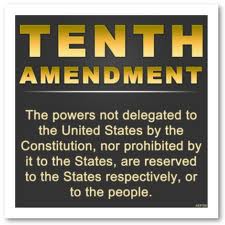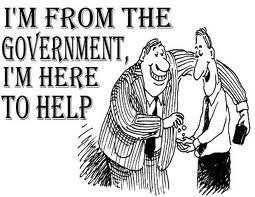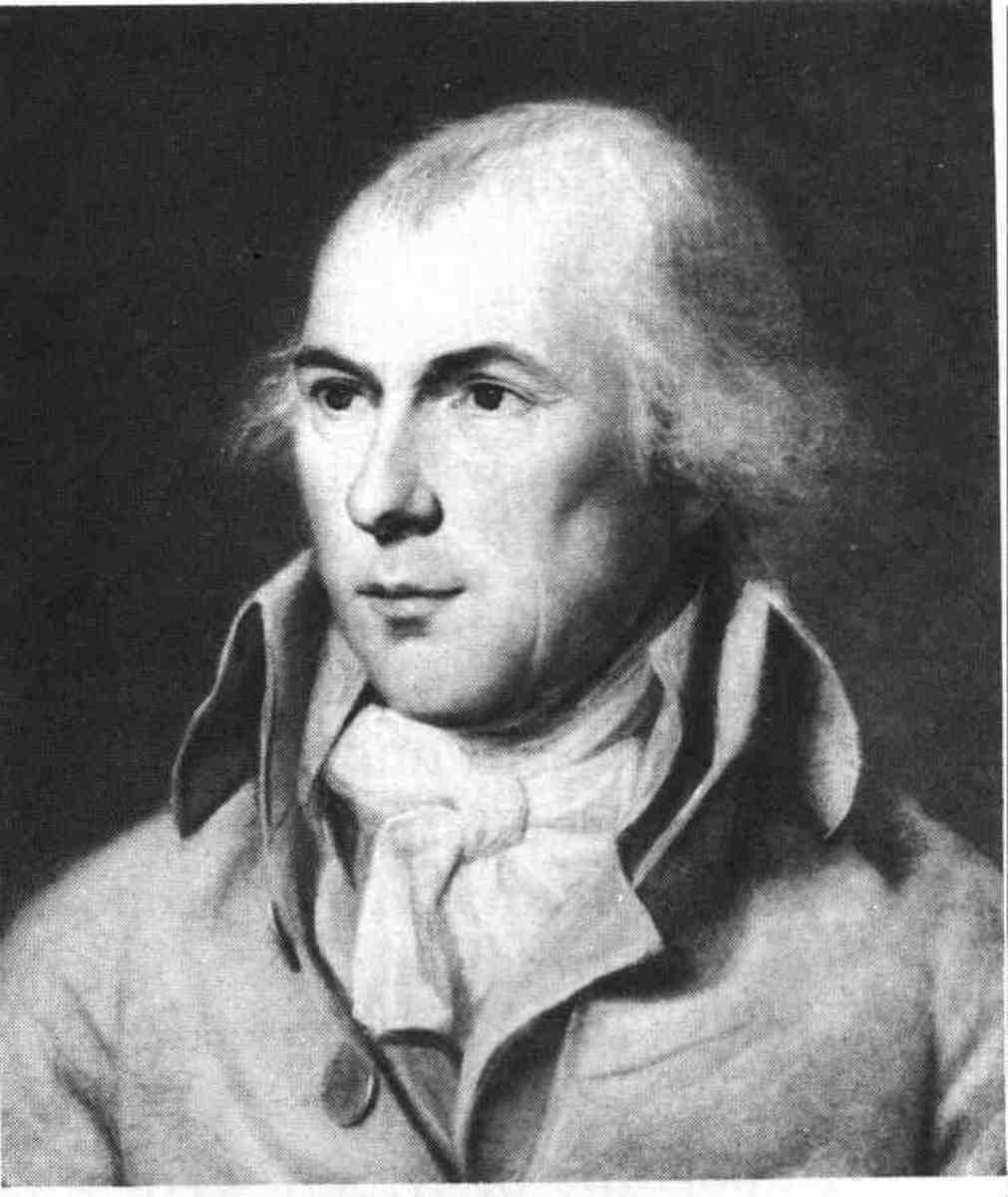The 10th Amendment, The States And The People


Part 1 - Historical Perspective
Being a Constitutionalist, you know one of the people who believe in the strict interpretation of the US Constituion, I naturally also tend to be a states' rights type of guy. Historically speaking, many of the individual states demanded the inclusion of the 10th Amendment into The Bill of Rights before the final ratification of that document became the law of the land. Keep in mind that this nation was created as a Republic, not a democracy. We are a Republic with democracy playing a role in our electoral processes. The Founding Fathers knew that to grant unlimited powers to a central, federal authority tends to attract tyrannical treatment. After all, they had to fight a Revolutionary War to have that yoke of tyranny removed from around their necks.
The wording of the 10th Amendment is rather simple with a specific intent behind that simplicity. It essentially is there to guarantee States' rights. The actual Constitution was designed to grant the federal government limited and enumerated powers only. Enumerated means listed and they are right there for your reading pleasure. If you've never read the US Constitution, and many have not, then I suggest that you do. It's dry reading in places admittedly but as a citizen you should possess the knowledge of its contents. Anything not enumerated, by the power of the 10th Amendment, belongs to the states or the people themselves.
The founding fathers believed in powering down, not powering up. The first part of this Hub is a history lesson so that readers can refresh themselves, or maybe in some cases, understand how the 10th Amendment came about and the how individual states framed their thinking back in that era. In short, what was their reasoning behind the amendment.
The actual date of the colonists declared their independence wasn't July 4th as many believe. In fact the individual colonies, in concert with each other, declared their independence from England on July 2, 1776. July 4th was the day that declaration was announced, not voted upon and declared. On July 2nd they became essentially 13 sovereign states. Similar to being 13 separate countries uniting together in the war effort to kick King George III to the curb. They established their own governments and there were no legal ties between them. Cooperation with each other was the ticket of the day,specifically in the war effort.
This wasn't a willy nilly plan at all. There were proposals made on June 6th, 1776 with Richard Henry Lee from Virginia being one of the architects. He proposed to the Congress of that time that independence be declared and that a confederation be established. It is named "The Lee Resolution" if you care to do further research.
A committee was established (see how things sometimes never change) to study the various aspects of creating a confederation. Their proposal was submitted to Congress in the summer of 1777, went through a number of revisions and was ultimately passed on November 17th of 1777. Many people may be under the misconception that on July 4th of 1776 someone went - POOF - and we were a country, not quite. What was created were The Articles of Confederation, which weren't the law of the land upon passage. Each state had to then determine whether they were buying into it or opting out. It wasn't until March 1st of 1781, when the last state of Maryland ratified the Articles, that they joined the other twelve United States and this nation was formally born.
Why did it take so long? Besides having to fight the redcoats, the citizens of the individual states were concerned about having to give up too much local authority to a new centralized, national government. Wasn't that what they were fighting about in the first place? Was it wise to rush into replacing one tyrant with another? The status quo at the time was that each state was sovereign and they weren't keen on relinquishing their local power to some far away authority. The arguments at the time centered on states' rights versus national rights and it got a bit heated at times.
The Founding Fathers weren't dummies. To help quell the debate the following wording is in Article II of the Articles:
"Each state retains its sovereignty, freedom, and independence, and every power, jurisdiction, and right, which is not by this Confederation expressly delegated to the United States, in Congress assembled."
They specifically wanted to limit the power of the national government even then. The Articles of Confederation were a very weak form of government to the point of being a functional failure. There was no authority to tax to support the powers given to the national government. Delegates could either attend sessions or be AWOL (sounds like some of the state legislatures of late, doesn't it?). It turned out to be such a weak form of governance that it was ultimately dissolved and the United States Constitution was written to replace the loose goose they initially created.
The US Constitution was actually penned in 1789. But it still wasn't the law of the land. Once again the individual States had to ratify the document. The debates raged again concerning certain weaknesses which the Constitution failed to address, States' rights again being one of them. There were two factions involved in the dispute - the Federalist party and the Anti-federalist party.
The federalists included George Washington, James Madison, John Adams and Alexander Hamilton. Their position was that diluting the Constitution wasn't necessary as it would dilute the power of a federal government too much resulting in the same problems that were created by The Articles of Confederation.
The Anti-federalist were led by Thomas Jefferson, George Mason and Patrick Henry. This group was concerned about the Constitution omitting the natural rights of the people such as freedom of speech, religion and the press and not being subjected to cruel and unusual punishment. They felt that the Constitution was worded too weakly to protect the individual rights of the States and the people. The Federalists felt that since the document only granted certain powers to the federal government anyway, why was there a need to list other protections.
The fix to that particular problem is the Ninth Amendment to the Constitution which states:
"The enumeration in the Constitution, of certain rights, shall not be construed to deny or disparage others retained by the people."
In layman's terms - Don't Tread On Me! Just because a right isn't mentioned in the Constitution doesn't mean the federal government has the right to intrude into that area. Back to the ratification process which was on a slippery slope. It was uncertain whether enough states would ratify the new Constitution as they were concerned about giving a federal authority too much power, having to abrogate the state's powers and not insuring - in writing - the individual's basic human rights. The Founding Fathers had traveled down that road recently and weren't prone to go there again.
These parties knew how to compromise. The Federalists from Massachusetts crafted what we now know to be The Massachusetts Compromise. This required that a list of proposed amendments be sent to our first Congress if the Anti-Federalists would agree to ratify the new Constitution. Obviously they trusted each other, the Constitution was ratified and the new government was formed. These were men of character. They trusted in each other but the distrust of a strong central government was still remained.
Our form of government actually began operating on March 4th of 1789 when a new Congress convened. On June 8th a list of 20 proposed amendments was offered up by James Madison for consideration. Those 20 naturally included the 10th Amendment which was very similar in wording to what can be found in The Articles of Confederation concerning the issue. Congress voted to accept 12 of the 20 that September. 10 of those 12 passed muster when Virginia voted to ratify and they became law on December 15th of 1791. What they had achieved was the birth of The Bill Of Rights.
The core idea of reserving the rights of the states remained an issue for many years as you should surmise. They knew what they knew and what we need to not ever forget - Too much power in a centralized government invites tyranny.
It's important that we read, understand and now teach true American history rather than any sanitized version. Part 2 of our discussion will follow shortly. We'll continue with further examination of the 10th Amendment.
Class adjourned. Be prepared for a pop quiz the next time we meet.
The Frog Prince loves his nation and is worried about the present course we are on, as you should also be. Examine closely what is occurring in Washington today in context with our Founding Father's knowledge of the dangers of a big, centralized authority. Food for thought.





